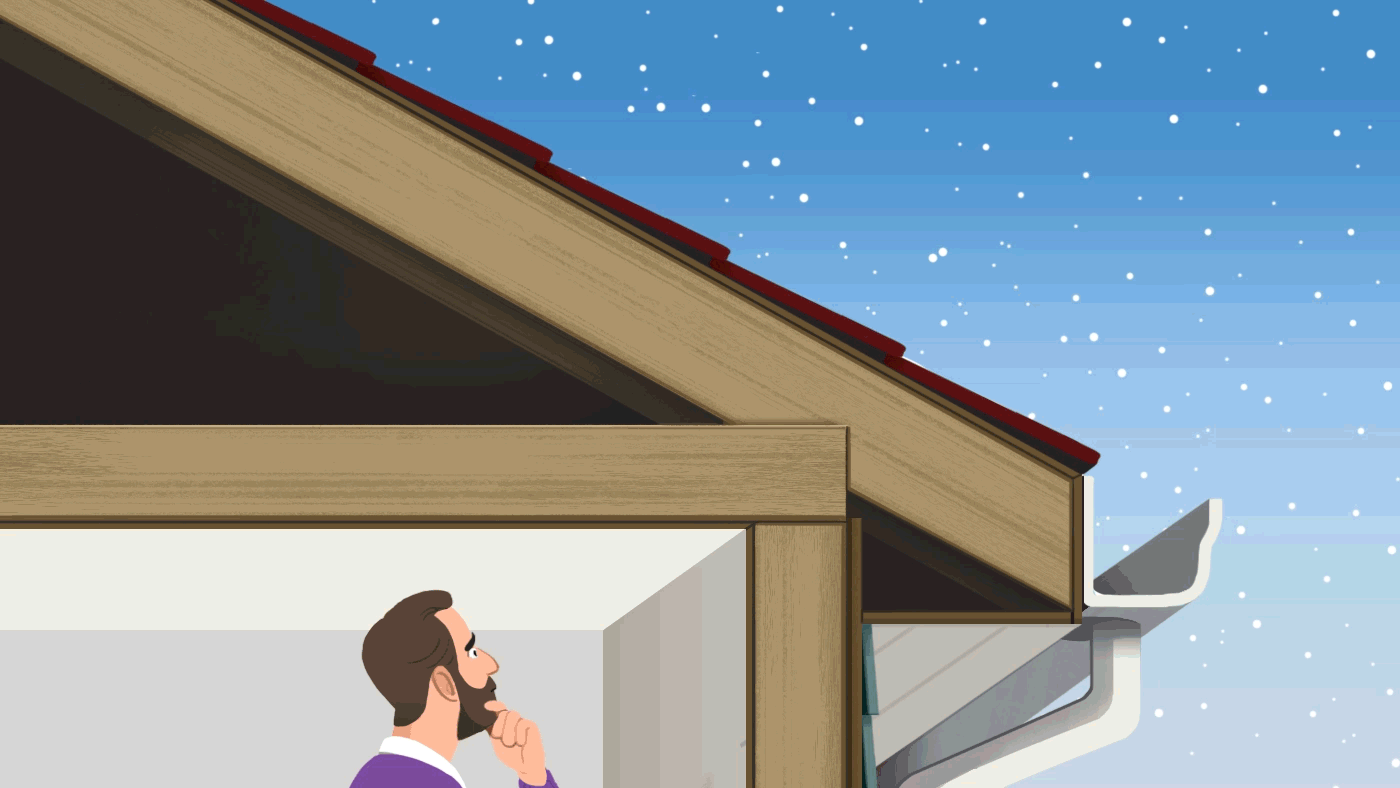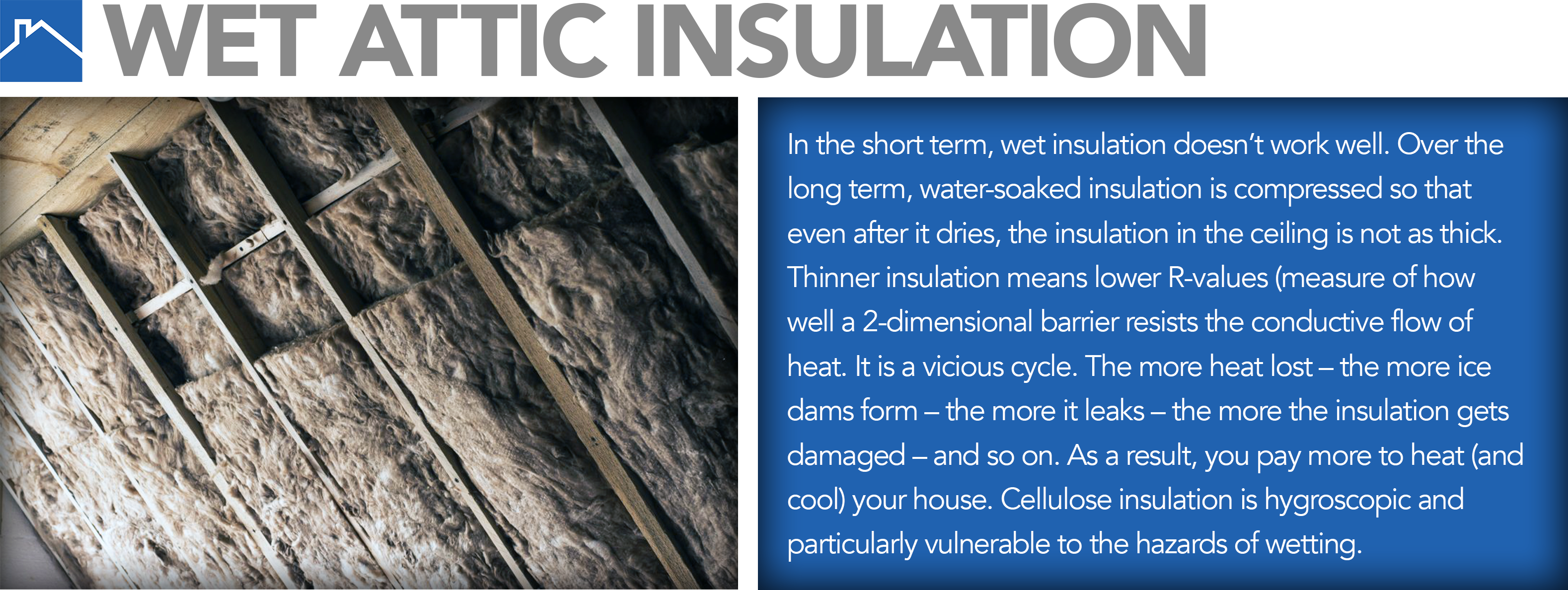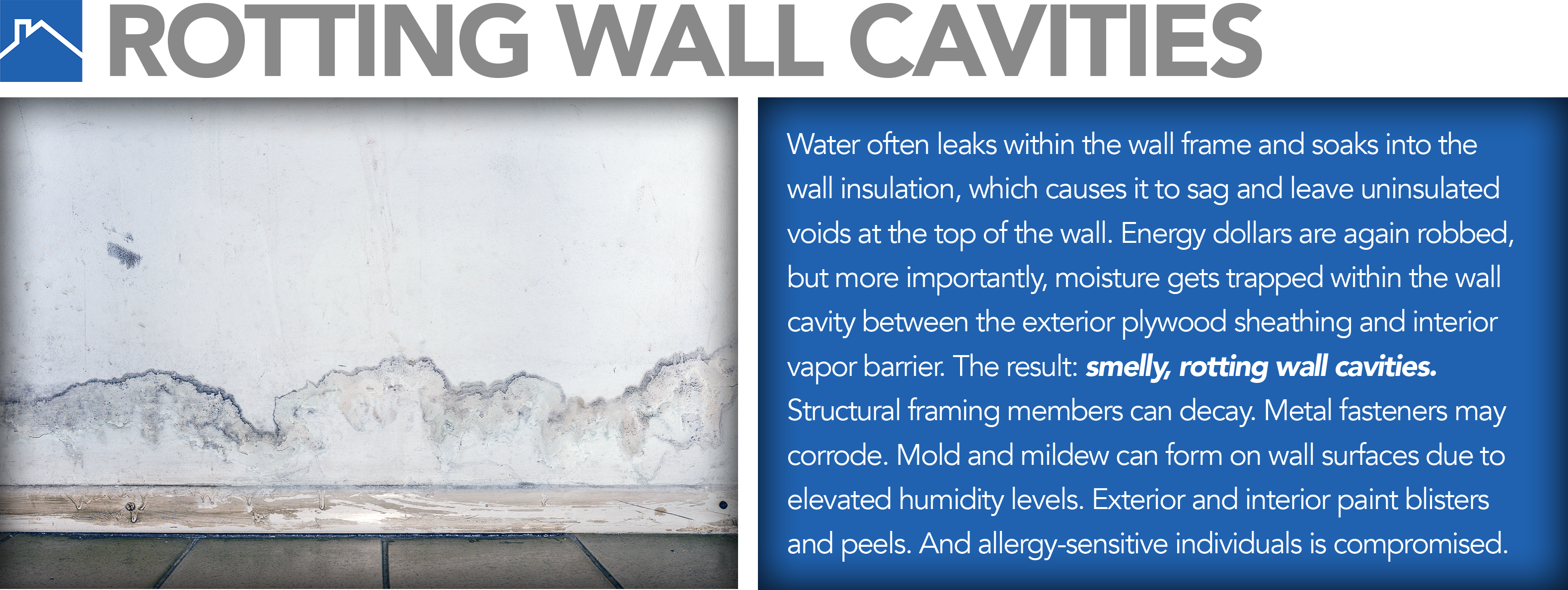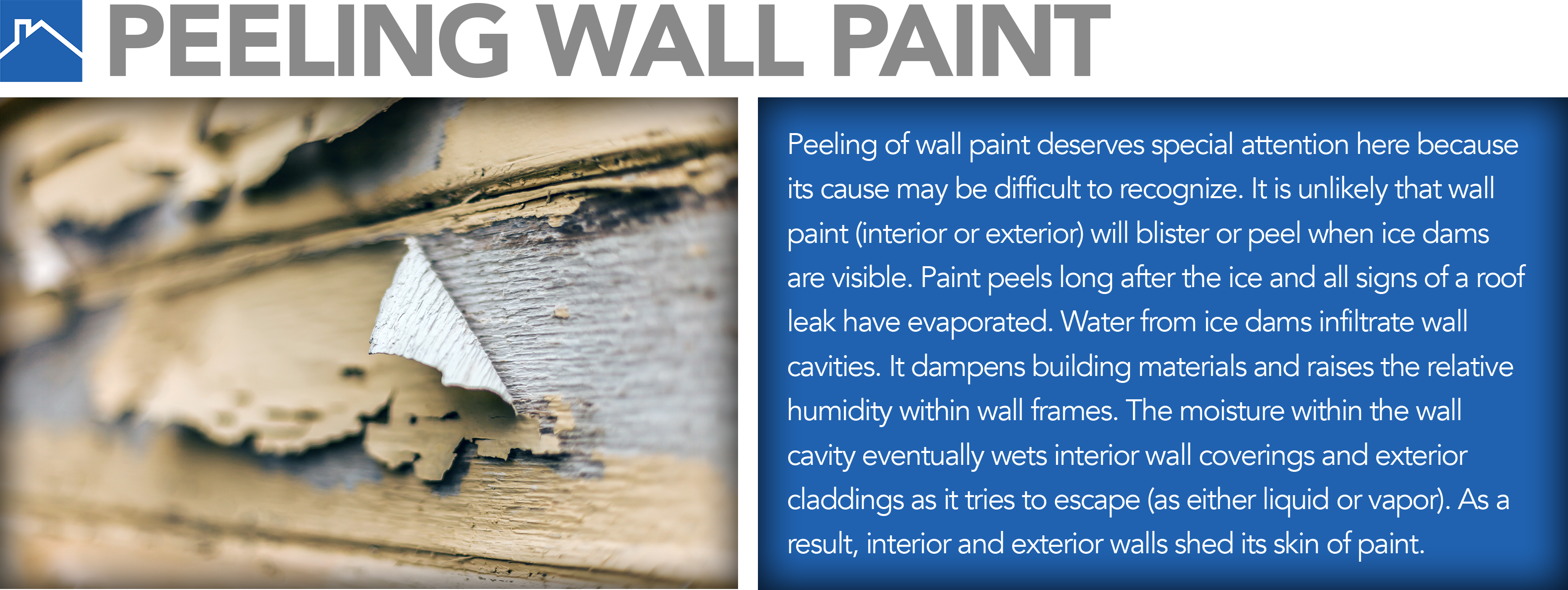
What is an ice dam?
An ice dam is a ridge of ice that forms at the edge of a roof and prevents melting snow (water) from draining off the roof. The water that backs up behind the dam can leak into a home and cause damage to walls, ceilings, insulation and other areas.
What causes ice dams?
Simply put—Non-uniform roof surface temperatures lead to ice dams.

Heat loss from a house, snow cover and outside temperatures interact to form ice dams. For ice dams to form, there must be snow on the roof and, at the same time, higher portions of the roof's outside surface must be above 32° F (freezing) while lower surfaces are below 32° F. These are average temperatures over sustained periods of time.
*For a portion of the roof to be below freezing, outside temperatures must also be below freezing.
The reason ice-dams form along the roof’s lower edge, usually above the overhang, is straight-forward. The upper roof surface (toward the ridgeline) is at a temperature that is above freezing. And the lower part of the roof surface (along the eaves) is below freezing. The upper roof surface is located directly above the living space. Heat lost from the house warms this section of the roof, melting snow in this area. During periods of sub-freezing temperature, the lower regions of the roof deck remain at sub-freezing ambient temperatures. Roof overhangs are not warmed by indoor heat-loss.
The snow on a roof surface that is above freezing will melt. As water flows down the roof it reaches the portion of the roof that is below 32F and freezes—This causes the ice dam.
What’s the damage?
It’s easy to understand that allowing water to leak into your house is a bad idea. Ice dams cause millions of dollars of damage every year. Much of the damage is apparent. Water-stained ceilings, dislodged roof shingles, sagging ice-filled gutters, peeling paint, and damaged plaster are all easily recognized and usually repaired when weather or budgets permit. But other damage is not as obvious and often goes unchecked.



So the message here is to check your home carefully when ice dams form. Investigate even when there doesn’t appear to be a leak. Look at the underside of the roof sheathing and roof trim to make sure they haven’t gotten wet. Check the insulation for dampness. And when leaks inside your home develop, be prepared. Water penetration often follows pathways difficult follow. Don’t just patch the roof leak. Make sure that the roof sheathing hasn’t rotted or that other less obvious problems in your ceiling or walls haven’t developed. And then detail a comprehensive plan to fix the damage. But more importantly, solve the problem.
What’s the solution?
In order to ensure that your roof deck is well protected from potential ice dams, 3 key factors must be considered:
-
Is the roof assembly adequately insulated to control temperature?
-
Is the roof assembly ventilated to evenly distribute airflow?
-
Is the building envelope tight to protect from moisture and air problems?
Following these 3 factors when preparing for your roof renovation will greatly reduce variations in temperature in your roof deck, ultimately preventing any melting snow running down your roof from freezing at your gutter line.
When it comes to ensuring proper roofing ventilation, especially when it comes to preventing ice dams, there is no better solution than Keene’s Viper Ridge Vent™ and Viper Intake Vent™. Not only are these products specially designed with the above factors in mind, but the Viper Intake Vent also recently passed the New England Ice Dam Test, establishing itself as a guaranteed solution for the prevention of ice dams.